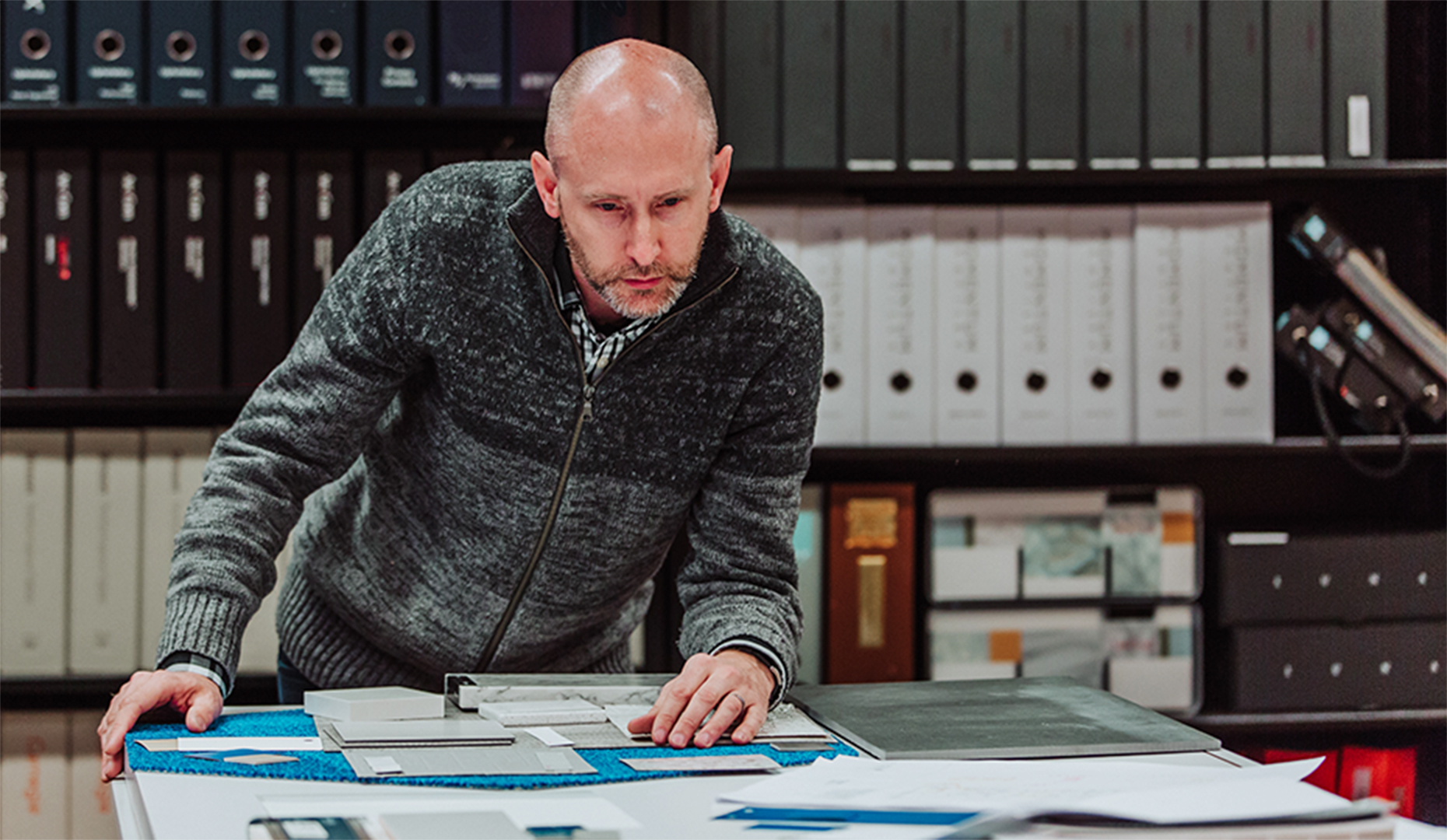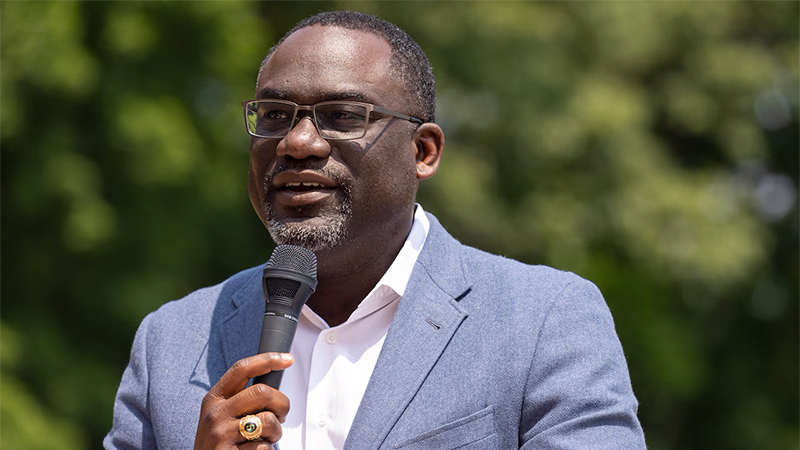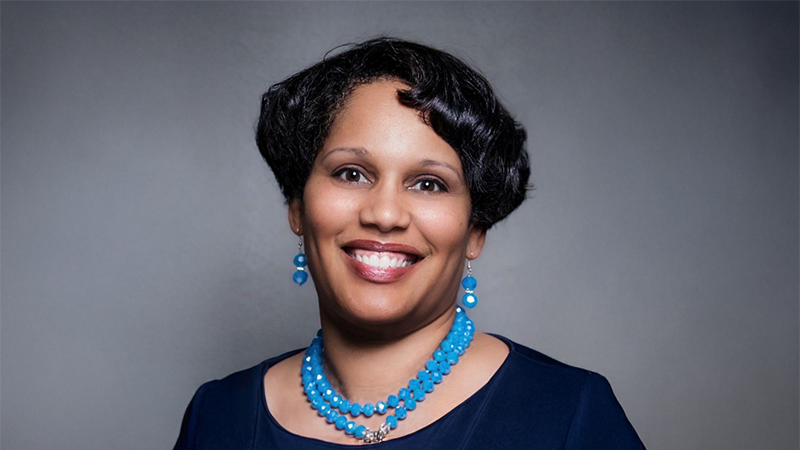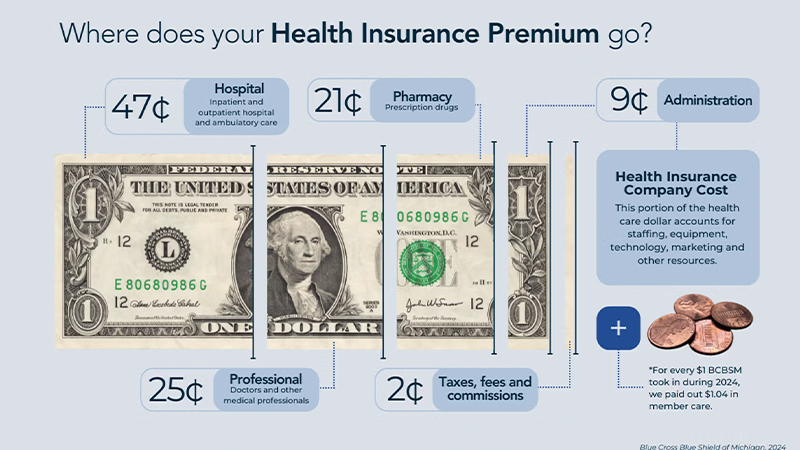A Designer Blueprint with Tim Cane, Architectural Design Manager at Eckert Wordell.
What does an architectural design manager do?
I am in charge of the design department for the architects and interior designers; we work together with the engineering team to get the job done. We are an eclectic group. We work on designs of all sizes, but our focus is healthcare at the moment. It’s my job to coordinate the efforts of the interior designers and architects and spearhead any collaboration between them all the way through to final design.
What originally sparked your interest in design?
I was encouraged as a child to draw and explore with a pencil. I also love art and history, so those two things melted together when I started architecture school. I earned a scholarship to study in Chicago and fell in love with that city and the architecture there. Met my wife there, and we ended up in Kalamazoo when I was lucky enough to find this company.
Everyone has to start somewhere. What was your first job?
The first job I ever got was working in the printing department for Shell Oil to help me pay for architecture school. My hometown, Aberdeen, is big in the oil industry. I was in the basement every day copying blueprints. It opened my eyes to the real world of industry and how much time and effort goes into any kind of large-scale project. When you see thousands of blueprints a day and have to copy them, it can be a mundane kind of job, but you also get experience.
What is your favorite aspect of your current position?
My favorite part is being able to work with multiple specialties in the field. I also really enjoy getting a blank sheet of paper, having a design problem to work on, and trying to work towards a solution. Sometimes, the client may know the end product they want but don’t know how to get there. That’s our job to tease out of them what they really want and what they need.
Where do you find inspiration for a project?
I am constantly looking at architecture all over the world in magazines and on the internet—you never know where the next idea will come from. I have a whole ridiculous library of architecture and design books that I often flick through, not particularly looking for anything. Sometimes you find something. I think books are something that not a lot of people buy and collect anymore, but I have a lot. My wife makes fun of me for still buying architecture books. I love them.
Sometimes, I get my best ideas when I close the door, put some music on, and get to work. But other times, it could come from finding out that a coworker who you work with is working on a personal project that will astound you. My kids also just blow my mind every once in a while. They will just be doing some sketching, and when I see it, I’m like, “That’s more creative than anything I did today. That’s amazing.”
What is your favorite project you have worked on?
Recently a couple of projects that I enjoyed working on have been the Family Health Center here in Kalamazoo, and the Foundry Project at 600 East Michigan. We always get a kick out of seeing a project rise out of the ground, working with the construction manager. It’s especially rewarding when something’s happening in the city where you live, and you drive by it and see that you’re changing the environment. It’s great to see that there are companies out here in Kalamazoo that are investing in their community.
What would be your dream project?
Oh, an art gallery or a museum project. I think that’s one of those special civic projects that are so rare that every architect in the world dreams of being the one to design them. It’s a place that people are going to go and look at art, and the building is a piece of art.
If you could be creative in another space, what would that be?
I think product design is a fascinating field to work in. Working on product design would be fascinating because it’s a microcosm of all design distilled into working on one thing. As architects, we’re always using products as well. They integrate into our designs a lot. I go back to the Walkman as a piece of technology that changed my life as a ten-year-old boy, when in 1984 I got one for Christmas. The amount of technology and design going into that one object was surprising. Next, designers worked on the phone. Who knew that the phone was going to be the one piece of equipment that you really can’t live without?
What advice would you give to an aspiring architectural designer?
I would say the focus a lot for new students is computer work: Learn the programs that are going to be useful when you come out of college so that you can join the workforce and immediately become a crucial part of a project or a team working on something. Be critical of your work. Continue to sketch, and have a sketchbook and a pencil with you wherever you go. Having your eye, your brain, and your hand connected are essential to being creative in the long-term. You don’t want to be pigeon-holed as someone who can’t be creative. It’s a creative feeling that drives us and that will push any project forward. Do not be afraid to speak up in a team setting. We encourage the youngest architects we have to speak up as much as possible.




